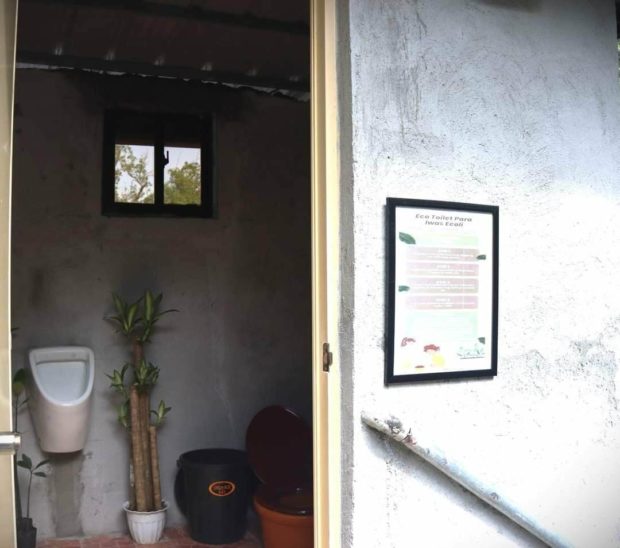
The eco-toilet built by the Department Of Environment and Natural Resources-Region 3 at the Sibul II Mangrove Nursery and Eco-Tourism Park in Orion, Bataan. (Photo courtesy of DENR-3)
MABALACAT CITY, Pampanga — The Central Luzon office of the Department of Environment and Natural Resources (DENR) is promoting the construction and use of an eco-toilet system as part of its efforts to mitigate pollution in Manila Bay areas.
An eco-toilet system was initially built at the Sibul II Mangrove Nursery and Eco-Tourism Park in Orion, Bataan, said Paquito Moreno Jr., DENR-3 regional executive director.
The Mines and Geosciences Bureau Region 3 developed the system to minimize bacteria contamination of water bodies like bays and rivers, said Moreno Jr.
The World Health Organization said E. coli is commonly found in the lower intestine of warm-blooded organisms.
Most E. coli strains are harmless, but some could cause food poisoning, the WHO said on its website.
Moreno cited studies showing that sources of E. coli include untreated human sewage, failing septic tanks, livestock agriculture, pets, wildlife, and illegal connections from home sewer systems to surface water.
Waterless toilet
He said the facility in Orion, the first in the region, promotes waterless toilet as an alternate to the water-flushed type.
“Through this initiative, the volume of pollutants draining to water bodies along the Manila Bay area may be reduced, which will eventually help us achieve the coliform limit of 200 MPN (most probable number) per 100 mL (milliliters) for Class C water classification,” he said.
The DENR-3 said the eco-toilet system works by separating human waste from urine, which passes through the urine-diverting dehydrating toilet bowl.
Upon separation, the nitrogen-rich solid waste is covered with materials like fly ash, bentonite and zeolite, shredded dried leaves and carbonized rice husks.
“This creates an alternating layer of [nitrogen]-rich and [carbon]-rich materials, which act as the basic components of fertilizer. The urine is likewise treated and processed into a liquid fertilizer,” it explained. INQ